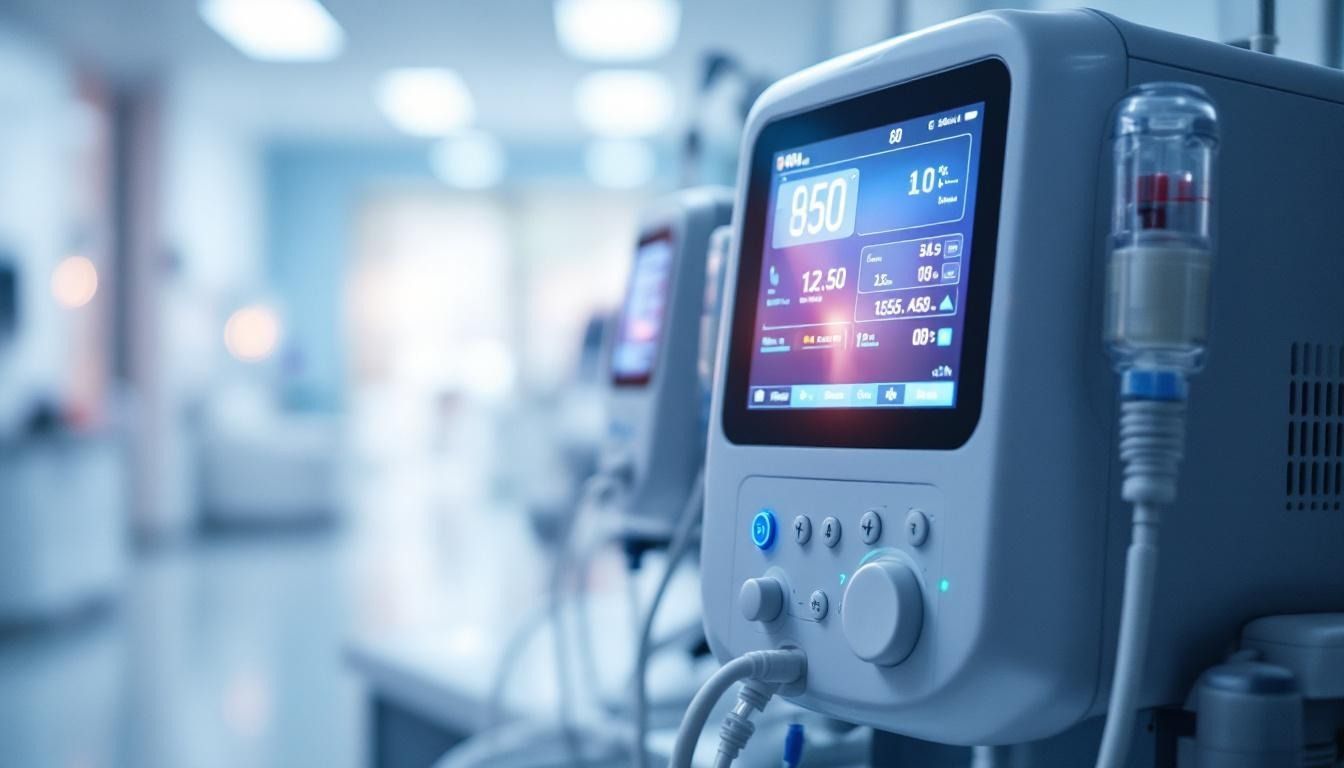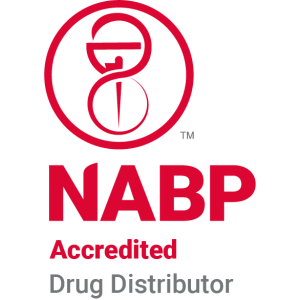What are state-of-the-art infusion pumps, and how do they work?
Introduction to Infusion Pumps
Infusion pumps are indispensable in modern medical care, offering precision in the administration of fluids, medications, and nutrients to patients. These devices have evolved significantly over time, with state-of-the-art models featuring advanced technologies that enhance safety and efficiency. In this article, we delve into what makes these pumps cutting-edge, examining their types, functionality, and impact on patient care.
Understanding the Basics of Infusion Pumps

What is an infusion pump and how does it work?
An infusion pump is a medical device designed to deliver fluids, medications, or nutrients into a patient's body in a controlled manner, primarily via intravenous (IV) lines. Infusion pumps are essential in various healthcare settings, including Intensive Care Units (ICUs) and surgical wards, where precise medication administration is critical for patient safety.
Infusion pumps operate through various mechanisms tailored for different applications. Here are the main types:
- Large Volume Pumps : These can deliver substantial amounts of fluids, using mechanisms such as peristaltic actions where rollers push liquid through tubing. They are commonly employed to administer medications or nutrients over a specific time frame.
- Syringe Pumps : These devices utilize a piston mechanism to control the rate of drug delivery very precisely, often suited for smaller volumes, such as opioids in patient-controlled analgesia (PCA) settings.
- Ambulatory Pumps : Designed for portability, these allow patients to receive treatment while continuing their daily activities. Examples include elastomeric pumps, which operate on the pressure from a stretchable balloon to deliver medication without needing electricity.
Overall, infusion pumps enhance the safety and accuracy of drug delivery, enabling healthcare professionals to provide tailored therapy according to patients' individual needs. Features like alarms and sensors are integrated to detect air bubbles or blockages, further protecting patient safety.
Diverse Array of Infusion Pumps

What are the types of infusion pumps and their uses?
Infusion pumps are essential medical devices designed to accurately deliver fluids, medications, and nutrients at controlled rates. There are several types of infusion pumps, each tailored for specific medical applications:
-
Large Volume Pumps : Used primarily in critical care settings, these pumps can administer significant volumes of fluids and are essential for patients requiring ongoing hydration or medication. They often utilize peristaltic mechanisms to ensure accurate delivery.
-
Small Volume or Syringe Pumps : Suitable for administering lower volumes of medication, these pumps use a syringe mechanism to push the medicine through at a predetermined rate. They are commonly employed in situations where precision is crucial, such as chemotherapy.
-
Patient-Controlled Analgesia (PCA) Pumps : Allow patients to self-manage pain medication delivery. Typically used for strong pain management protocols, PCA pumps let patients administer their doses, enhancing their autonomy during recovery.
-
Elastomeric Pumps : Also known as balloon pumps, these portable devices deliver medication at a constant rate without the need for electricity, making them ideal for outpatient settings and long-term therapies.
-
Enteral Pumps : Designed for feeding tubes, these pumps deliver nutrition directly to patients with impaired digestive systems.
-
Insulin Pumps : Dedicated devices used to administer insulin in patients with diabetes, allowing for precise insulin delivery based on individual needs.
Ambulatory vs. stationary pumps
Infusion pumps can be categorized into ambulatory and stationary types:
| Type | Description | Application |
|---|---|---|
| Ambulatory Pumps | Portable devices that allow patients to move freely while receiving medication. Ideal for outpatient therapy and long-term treatments. | Home care, outpatient settings |
| Stationary Pumps | Designed to be used at a patient's bedside, offering robust support for critical care situations. These pumps often have advanced capabilities suited for hospitals. | Intensive Care Units (ICUs), hospitals |
In summary, with advancements in technology, infusion pumps are becoming increasingly sophisticated, enhancing patient care through better treatment adherence and minimizing risks associated with medication administration.
Components and Design of Infusion Pumps

What are the parts of an infusion pump and their functions?
An infusion pump consists of several key parts, each with a specific role in ensuring safe and precise delivery of medications or fluids to patients. The Fluid Reservoir holds the medication to be infused, serving as the starting point for the process. Tubing connects this reservoir to the patient's catheter, ensuring the medication travels safely and efficiently.
The heart of the pump is the Pump Mechanism , which controls the flow rate. This mechanism may employ various technologies, such as peristaltic or syringe methods, to ensure accurate delivery. The Control Unit is crucial for healthcare professionals, allowing them to set and monitor infusion parameters according to patient needs.
Safety is enhanced by Alarms and Monitoring Systems that alert staff to any issues, such as occlusions or low fluid levels. Power Supplies , whether AC powered or battery-operated, ensure that pumps can function both in fixed settings and during patient transport. Other important components include connectors for secure connections, a Clamp to stop fluid flow during adjustments, and a user-friendly User Interface for ease of operation, allowing healthcare providers to interact effectively with the pump.
Innovations in design
Recent innovations in infusion pump technology focus on usability and safety. Devices like the Ivenix Infusion System feature large, intuitive touchscreens that minimize programming errors and facilitate quicker interactions. The incorporation of Dose Error Reduction Software (DERS) and drug libraries allows for real-time updates without disrupting patient therapy, enhancing both safety and adherence to best practices. This commitment to advanced design enhances the user experience while concurrently improving patient safety during IV medication administration.
Operational Responsibilities of Nurses
What are the responsibilities of nursing staff when using infusion pumps?
Nursing staff have several critical responsibilities when using infusion pumps to ensure patient safety and effective medication administration. Firstly, they must possess a thorough understanding of the medications being delivered, including their indications, contraindications, and possible side effects. This knowledge is essential for making informed decisions and for swift interventions if complications arise.
In addition to medication knowledge, nurses need to be well-versed in the operational procedures for the specific infusion pumps utilized in their facility. Each type of infusion pump, whether it be a smart pump or a traditional model, comes with its own set of functionalities and programming methods. Proper training is vital to minimize the risk of programming errors.
Ensuring safe and effective use
Continuous monitoring of patients is essential during the infusion process. Nurses must check the vascular access sites for potential complications such as infiltration or extravasation, as these issues may not be detected by smart infusion pumps. Constant vigilance can help identify signs of adverse reactions early on, allowing for timely interventions.
Nurses are tasked with accurately programming the infusion pumps, utilizing established drug libraries to ensure adherence to organizational protocols. Conducting thorough medication reconciliation during patient transitions is another key duty, ensuring that all prescribed medications are correctly accounted for and administered.
Moreover, proper documentation is critical for maintaining accurate patient records. Nurses play a pivotal role in patient education, helping patients understand their treatments and the role of infusion pumps in their care. Finally, collaborative verification of medication changes and pump settings with colleagues fosters a culture of safety and reduces the likelihood of errors in medication administration.
The responsibilities of nursing staff in managing infusion pumps reflect their role as essential advocates for patient safety and effective treatment.
Smart Infusion Pump Technology

Features and functionalities of smart pumps
Smart infusion pumps (IPs) are designed to enhance the safety and efficiency of intravenous (IV) drug delivery. Equipped with advanced features such as Dose Error Reduction Software (DERS) and predefined drug libraries, these pumps guide healthcare professionals through the medication administration process. This technology significantly reduces the risk of medication errors by implementing soft-stop and hard-stop limits for dosing, meaning the device alerts clinicians when dosing exceeds predefined safe ranges.
Smart pumps come in various types:
- Peristaltic Pumps: Utilize rollers to push the fluid through flexible tubing.
- Syringe Pumps: Control delivery through a piston mechanism, ideal for smaller volumes.
- Elastomeric Pumps:
Use balloons that compress to deliver a constant fluid rate, suitable for outpatient use.
They also include features such as real-time updates of drug libraries, allowing for seamless adjustability during patient care.
Integration with electronic systems
The integration of smart infusion pumps with electronic health records (EMRs) and hospital systems is another critical advancement. This connectivity provides real-time access to patient data, fostering improved compliance with medication administration guidelines. This interoperability helps eliminate programming errors frequently associated with manual entries.
For example, systems like the Alaris infusion pump enhance user safety by allowing automated medication order processing and scanning workflows, ensuring processes are performed with minimal manual input. This technology not only streamlines operations but also supports better patient outcomes by enhancing monitoring capabilities and enabling immediate feedback on therapy outcomes.
In summary, smart infusion pumps are becoming integral in clinical settings as they incorporate safety features and integrate effortlessly with existing electronic systems, yielding improved patient care and operational efficiency.
Innovations and Safety in Infusion Pumps
Safety Features of Modern Pumps
Modern smart infusion pumps are designed with state-of-the-art safety features that enhance patient care.
They include:
- Dose Error Reduction Software (DERS) : This software assists healthcare professionals by providing alerts for potential dosing errors during the administration of high-alert medications such as insulin and heparin.
- Drug Libraries : These libraries store dosing guidelines and prevent medication errors by limiting the range of acceptable dosages.
- Soft-stop and Hard-stop Limits : These limits alert users about doses that are outside safe ranges, requiring confirmation before administration.
- Real-time Data Access : Integration with electronic health records enhances safety by ensuring instant access to critical medication information and patient history.
Reducing Medication Errors
To reduce medication errors further, several innovative strategies are employed:
- Intuitive User Interfaces : Modern infusion pumps feature user-friendly interfaces akin to smartphones, streamlining the programming process and reducing chances for human error.
- Regular Maintenance : Ongoing assessments and calibrations ensure that pumps perform effectively, minimizing risks associated with misprogramming and equipment failure.
- Training for Medical Staff : Comprehensive training initiatives for healthcare personnel ensure proficiency with infusion devices, dramatically improving compliance and safety during medication delivery.
The combination of technology advancements and systematic procedures lays a solid foundation for enhanced accuracy in infusion therapy.
Advancements and Trends in Infusion Pump Technology
Recent Technological Advancements
Infusion pump technology has seen significant improvements, particularly with the introduction of smart infusion pumps equipped with Dose Error Reduction Software (DERS). This software assists healthcare professionals by providing safety alerts during medication administration to help prevent dosing errors. Additionally, the integration of smart pumps with electronic health records (EMRs) enhances real-time data access and connectivity, further diminishing the likelihood of programming mistakes.
Recent products like the Ivenix Infusion System illustrate these advancements, featuring an intuitive touchscreen interface and real-time drug library updates without interrupting patient therapy. The ability to manage multiple medication infusions simultaneously while maintaining strict safety protocols is a major leap forward from older models.
Future Trends
Looking ahead, the future of infusion pump technology leans towards personalized medicine through closed-loop systems. These systems will utilize patient-specific data to adjust medication delivery in real-time. Emerging technologies will likely focus on improving user interface designs to facilitate easier operation, thereby decreasing human error and enhancing patient safety.
Moreover, the focus on interoperability within healthcare systems will grow, enabling seamless communication between infusion pumps and other medical devices, ultimately improving clinical outcomes. As more hospitals adopt these technologies, standardized protocols and training will ensure effective integration and enhance the overall quality of patient care.
| Advancement | Description | Impact on Patient Safety |
|---|---|---|
| Dose Error Reduction Software (DERS) | Alerts for potential dosing errors | Reduces incidence of medication errors |
| Real-time EMR Integration | Immediate access to patient infusion data | Minimizes programming errors and enhances safety |
| Personalized Closed-Loop Systems | Automatic adjustment of drug delivery using patient data | Optimizes medication administration and improves outcomes |
Historical Evolution of Infusion Pumps
Historical Milestones
Infusion pumps have a rich history dating back to the early 19th century when prototypes were first developed to control flow rates during intravenous procedures. By the 1960s, infusion pumps gained popularity in hospitals, superseding gravity-based delivery systems. This marked a significant shift towards precision in medication administration.
Evolution from Early Designs to Smart Pumps
The transition to electronic infusion pumps introduced a new level of control and safety. Notably, by the 1980s, the use of plastic IV bags became standard, enhancing usability and safety compared to glass containers. The early designs of pumps have seen numerous improvements, leading to the sophisticated smart infusion pumps we have today. These modern devices, introduced in the late 1990s and evolving rapidly into the 2000s, are equipped with advanced safety features such as dose error reduction software (DERS) and integrated drug libraries, fundamentally transforming medication delivery by minimizing medication errors. Today, approximately 70% of hospitals have adopted smart pumps, showcasing their critical role in patient safety and medication administration.
Advantages and Challenges of Infusion Pumps

What are the advantages and disadvantages of using an infusion pump?
Infusion pumps are invaluable tools in modern healthcare, primarily due to their ability to provide precise delivery of medications and fluids. This precision is particularly critical for drugs with narrow therapeutic ranges, where minute dosage variations can lead to severe consequences.
Some of the significant benefits of infusion pumps include:
- Enhanced Patient Safety: Smart infusion pumps integrate technology such as dose error reduction software (DERS) and drug libraries, significantly reducing the likelihood of medication errors.
- Alarm Systems: These pumps feature alarms for detecting blockages and air in the infusion line, ensuring clinician intervention if there are potential issues.
- Ease of Administration: With capabilities for continuous infusion, patient-controlled analgesia (PCA), and accurate dosing, infusion pumps improve the efficiency and safety of medication administration in various settings, including ICUs and hospitals.
However, despite their advantages, infusion pumps face several challenges:
- Safety Risks: They are not immune to mechanical failures and user errors, which can result in serious adverse events.
- High Costs: The financial burden of high-quality infusion pumps and the need for continuous staff training can strain healthcare resources.
- Compliance Issues: Ensuring adherence to established guidelines and managing alert fatigue among clinical staff are ongoing challenges that facilities must address to maximize pump efficacy.
Understanding these advantages and challenges can guide healthcare providers in leveraging infusion pump technology safely and effectively.
Solving Major Problems in Infusion Pump Use
What are the major problems of infusion pumps?
Infusion pumps, while crucial for patient treatment, encounter several significant challenges. One notable issue is alarm errors , where pumps may fail to activate alerts for critical problems or generate unnecessary false alarms, creating alarm fatigue among staff. This can lead to desensitization, inadvertently causing real emergencies to go unnoticed.
Another concern is software complications , which can produce incorrect dosage interpretations, leading to potential overdoses or underdoses. The display may show error messages erroneously, contributing to confusion during critical moments.
The user interface design itself can also contribute to errors, as a confusing layout may mislead healthcare professionals, resulting in incorrect pump settings or operational mistakes. Moreover, physical damage , battery failures , and electrical hazards are serious risks that can jeopardize patient safety and call for continuous vigilance.
What improvement measures can be implemented in clinical settings?
To address these issues effectively, several measures can be adopted in clinical environments:
- Regular Maintenance : Setting up a routine maintenance schedule ensures that the devices are functioning accurately and safely.
- Staff Training : Comprehensive training sessions can familiarize clinicians with the pumps' features, including alarm management and troubleshooting, to reduce human error.
- Enhanced Software and User Design : Investing in state-of-the-art infusion pumps with intuitive interfaces can streamline operations and minimize the likelihood of programming errors.
These proactive approaches can significantly improve the reliability of infusion pumps and enhance overall patient safety.
The Life Span and Maintenance of Infusion Pumps
How long is the lifespan of an infusion pump?
Infusion pumps are engineered for longevity and reliability, with a median lifespan that generally ranges from 5 to 7 years. For specifically implanted intrathecal pumps, research indicates a median longevity of approximately 5.4 years. Notably, those explanted due to battery depletion average about 5.9 years.
However, it's essential to choose infusion pumps judiciously based on patient needs. For patients with a life expectancy of less than three months, alternative therapies are usually more appropriate instead of relying on infusion pumps.
The FDA provides valuable resources for understanding the life cycle management of infusion pumps. Their document, "Infusion Pumps Total Product Life Cycle: Guidance for Industry and FDA Staff," offers comprehensive insights into performance and risk management throughout the device's lifetime.
What does life cycle management entail?
Life cycle management of infusion pumps involves systematic planning and monitoring of the device's usage over its lifespan. It encompasses several stages, including:
- Design and manufacturing : Ensures that devices are built to adhere to safety standards and expected performance capabilities.
- Operational use : Regular assessments of pumps in clinical settings help identify any performance issues or need for maintenance.
- Calibration and maintenance : Routine checks and calibrations are essential to verify accuracy and functionality, minimizing the risk of device failure during treatment.
- End-of-life considerations : Understanding when a pump has reached the end of its functional life is crucial for transitioning patients to alternative interventions safely.
By applying effective life cycle management practices, healthcare facilities can significantly enhance patient safety and care outcomes with infusion therapy.
Impact on Patient Care and Safety Enhancement
How do infusion pumps improve patient care?
Infusion pumps are pivotal in enhancing patient care by ensuring precise and controlled delivery of intravenous medications, nutrients, and fluids. They allow healthcare providers to administer treatments at exact rates, optimizing medication efficacy while minimizing potential complications. With smart infusion technology, these devices integrate dose error reduction software (DERS) and customizable drug libraries, which not only streamline the administration process but also enforce safety guidelines tailored to individual patient needs.
These pumps, such as the Ivenix Infusion System, feature intuitive interfaces and advanced informatics platforms. This enables real-time access to patient-specific infusion data, allowing clinicians to make informed decisions quickly. The ability to monitor infusions remotely and manage multiple therapy options enhances overall patient treatment and comfort, particularly in acute care environments.
How do infusion pumps reduce medication errors?
The introduction of smart infusion pumps has brought a significant transformation in minimizing medication errors associated with intravenous drug administration. By utilizing DERS, these pumps provide alerts for doses that exceed predefined safety thresholds, effectively preventing possible overdoses. Research indicates that around 70% of hospitals have adopted smart pumps, which has led to improved compliance in drug administration protocols and reduced alert rates significantly.
Moreover, the evolution of programmable safeguards allows healthcare providers to minimize risks associated with misprogramming, one of the leading causes of medication errors. This ongoing progression in pump technology signifies a robust approach to safeguarding patient health by ensuring accuracy, reliability, and consistent monitoring in drug administration.
Clinical Applications and Use Cases
Various Applications in Medical Settings
Infusion pumps play a pivotal role in healthcare settings, being used for a diverse range of applications. These advanced devices administer fluids, medications, and nutrients with precision, significantly enhancing patient care. Common uses include:
- Chemotherapy: Administering anti-cancer medications safely over extended periods.
- Insulin Delivery: Continuous regulation of blood glucose levels in diabetic patients via insulin pumps.
- Pain Management: Patient-Controlled Analgesia (PCA) pumps allow patients to manage their pain using pre-set dosages.
- Nutritional Support: Enteral pumps deliver vital nutrients directly into the digestive tract, tailored for patients who are unable to eat orally.
Each application highlights the infusion pump's versatility, adapting to the unique needs of patients in critical care environments.
Specific Case Studies or Examples
One notable implementation involved the Ivenix Infusion System, which was successfully integrated within a large academic medical center. Over 1,300 smart infusion pumps were deployed across various departments, achieving 100% drug library compliance in critical units. This initiative not only streamlined medication administration but also notably decreased alert rates from 4.18% to 0.79% , showcasing improved clinical practices.
Moreover, Micrel Medical Devices’ ambulatory infusion pumps illustrate advancements in portable therapy, enabling remote monitoring and real-time adjustments of patient infusions. Such innovations enhance treatment compliance and effectiveness, ultimately aiming for better health outcomes and patient safety.
User Interface and Usability of Infusion Pumps
Design features for ease of use
Infusion pumps are sophisticated devices that require a user-friendly design to minimize errors in high-stakes medical environments. State-of-the-art infusion pumps incorporate large, intuitive touchscreens that provide high-contrast text for better visibility. This feature is critical in busy hospital settings where healthcare professionals operate under high pressure and potential distractions.
In devices like the Ivenix Infusion System, the layout and design facilitate quick interaction, reducing the likelihood of programming mistakes. These pumps often support real-time updates to drug libraries without interrupting ongoing therapies, highlighting the importance of seamless and immediate accessibility to the necessary information.
Importance of intuitive interfaces
An intuitive user interface is vital in enhancing patient safety and improving clinical workflows. Advanced infusion pumps are designed similarly to smartphones, allowing users to navigate easily through programming steps. This user-centric approach not only streamlines operations but also significantly decreases the chances of human errors during medication administration.
For instance, newer systems come with features like soft-stop and hard-stop limits that alert healthcare providers when doses near safety thresholds, reinforcing safe medication delivery practices. Integrating these usability principles ultimately plays a crucial role in fostering a safer healthcare environment.
Implementation Strategies and Best Practices
Best Practices for Infusion Pump Use
Integrating smart infusion pumps into clinical settings requires adherence to established best practices to enhance medication safety. These include:
- Standardized Protocols : Establish and maintain drug libraries tailored to specific patient populations to prevent dosing errors.
- Regular Training : Conduct ongoing training sessions for healthcare personnel to ensure familiarity with the infusion pump technology and its safety features.
- Monitoring Compliance : Regularly analyze pump logs to monitor adherence to dosing parameters and alert rates, reinforcing the importance of compliance in patient safety.
- Interoperability with EMRs : Utilize infusion pumps that seamlessly connect with electronic medical records (EMRs) to streamline administration processes and reduce manual errors.
Strategies for Successful Implementation
The successful adoption of infusion pumps hinges on a collaborative and strategic approach. Key strategies include:
- Stakeholder Engagement : Involve a multidisciplinary team, including clinicians, pharmacists, and IT staff, to foster supportive environments and address concerns.
- Safety Culture : Encourage a culture of safety that emphasizes reporting errors without penalty—this can enhance vigilance and prompt corrective measures.
- System Testing and Feedback : Implement thorough testing phases for pump systems, soliciting feedback from users to refine the interface and address usability concerns.
- Continuous Improvement : Establish a feedback loop for evaluating infusion pump performance and incorporating improvements based on real-world experiences and changing clinical needs.
These strategies, when implemented thoughtfully, can significantly enhance the efficacy and safety of intravenous medication administration in healthcare facilities.
The Future of Infusion Pump Technology
Infusion pumps continue to revolutionize patient care by enhancing precision and safety in medication administration. As technology advances, these devices are set to become even more integral to clinical practice, offering more personalized and adaptive solutions to meet diverse healthcare needs. Understanding their operation, uses, and implications is key to leveraging their full potential and improving outcomes across medical settings.













